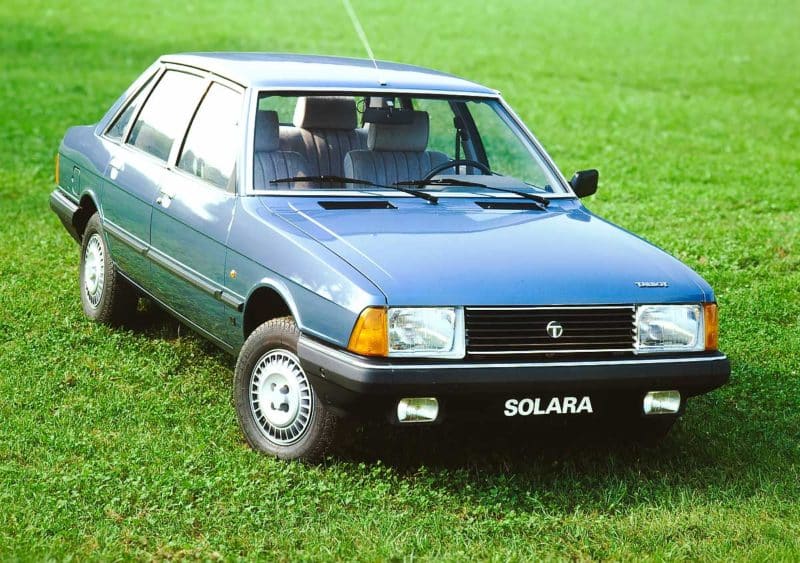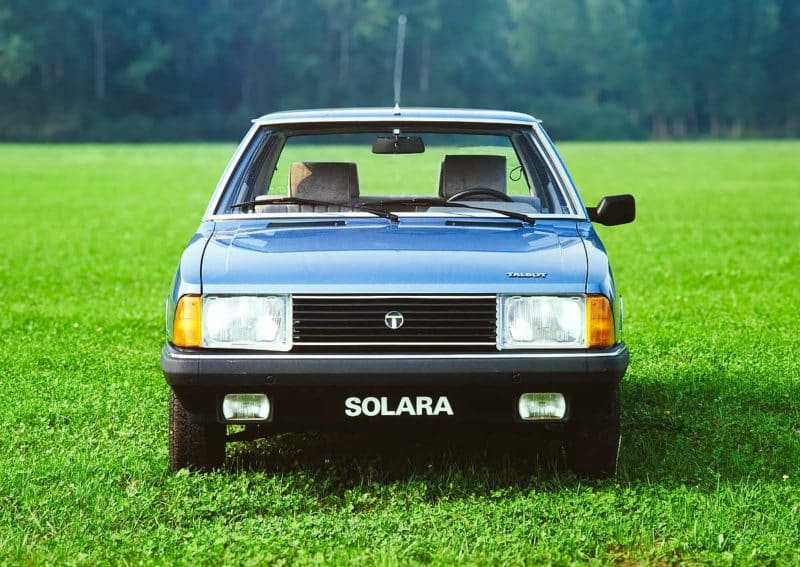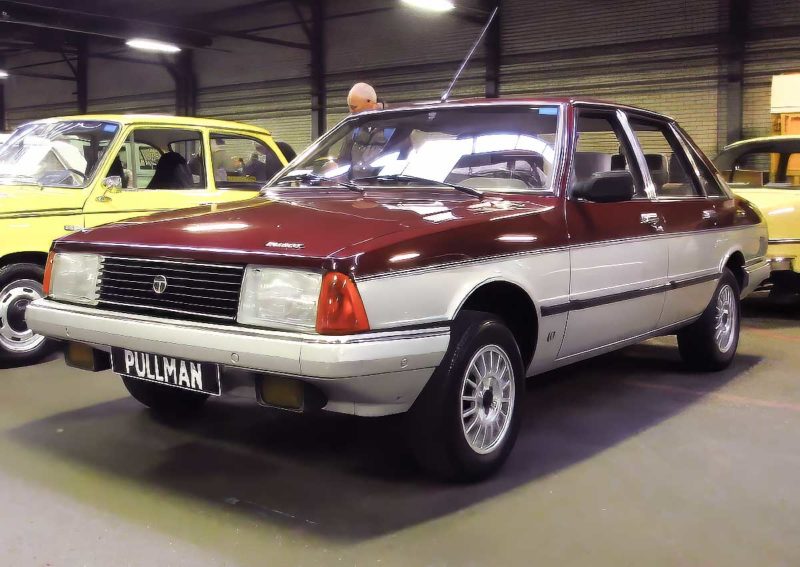1978 saw the takeover of parts of Chrysler Europe by PSA Peugeot Citroën the beginning of the end for the Simca brand. From 1979, existing Simca models were fitted with the Talbot badge, which marked a significant shift in branding. This was also the time when an ambitious project was initiated to thoroughly overhaul and upgrade the existing model range. A key part of this innovation was the introduction of the Talbot Solara, a vehicle that was intended to embody the brand's premium aspirations, even before this concept was widely recognized.
Transition to Talbot
The Talbot Solara made its debut in the spring of 1980 as “Talbot Simca Solara”, before continuing as the Talbot Solara. This change marks a significant upgrade within the Talbot range, with the Solara a clear example of the rich Simca heritage within the brand. The car builds on the success of the 1510 series, which itself succeeded the 1307/1308/1309 series in 1979, but is 8 cm longer and, despite the lack of a fifth door, offers more interior and headroom.
Debut of the Solara
At launch, the Solara was available with two engine options for the European market: a 1442 cc and a larger 1592 cc engine. The 1.6 engine variant was offered with both a single and double carburetor, with the most powerful configuration, equipped with a double Weber carburetor and good for 90 HP, being reserved for the more luxurious GLS and SX versions. From model year 1982, the Solara SX was equipped with a five-speed gearbox as standard Citroën, a privilege that was later also extended to the GLS.
Rich equipment levels
The top models of the Talbot Solara offered a remarkable amount of luxury for that time, including electric windows, alloy wheels, a trip computer, cruise control, four headrests, high-quality upholstery materials and power steering. These features, while often standard today, were a clear sign of luxury at the time.
Upgrades and special editions
During its production time, the Solara underwent several upgrades in both equipment and technology. The GLS, for example, was equipped with special 'pepper mill' rims and two-tone paint. Promotional models were also launched in various countries, including the special Pullman in France. Nevertheless, by the mid-1980s it became clear that the Talbot Solara's days were numbered.
Farewell to an icon
The end of the Talbot Solara was heralded by a simplification of the offering to the LS, GL, and SX models. The last years of production were characterized by optical adjustments, such as replacing chrome with matte black accents and bumpers in body color. In 1986, PSA finally said goodbye to the Talbot brand name, in favor of Peugeot's model range. The Talbot Solara, despite its ambitions, suffered from build quality problems and an uncertain positioning within the PSA group, which ultimately led to a fragmented image.
The last examples of the Talbot Solara were assembled in Spain, the only country where it was available with a diesel engine, from already produced parts. A total of 184.976 examples rolled off the production line, but today these elegant sedans are rare, a testament to the challenges and unique trajectory of the Talbot Solara within automotive history.






I think it is rightly an icon. After the Crysler Simca 1307 that did rust, I had a Solara with a 1600 cc engine. Very nice car and nice engine. I do not recognize the rust of the Solara, unlike the 1307 that I bought as a white car and had to trade in for a rust brown.
…. but to call it an icon...
Those two-tone cars (as in the first photo) were fashionable for a while in the early 80s and were delivered that way from the factory.
Most brands participated in this. I've always liked this.
A Solara is/was a luxury GT (Gran Tourismo, not to be confused with German GTs and GTIs) without the power of the GT. A limited engine, so it was not a fast touring car like the Italian GTs. This made it an affordable luxury car for a wealthy driver with a smaller budget.
There were two perfect examples at the Reims Fair two years ago.
Nice story, but what I'm missing is what does the Pullman version entail? Is that the same as Mercedes in that it relates to the interior?
A comrade from the village here has one, running on LPG as a daily use car. Not in competition condition, that is clear. And he uses his Tagora for a few months a year. Even rarer.
The fact that they are rare is not least due to their sensitivity to rust, which was considerably stronger than that of other brands/models.
The floor panels behind the front seats were legendary in that regard.
And the fenders and inner fenders continued to rot.
Actually the whole car, but the points mentioned were the top.
Only the old push rod engine, which kept running, could not be destroyed...
Apart from the rust, they were very nice travel cars.